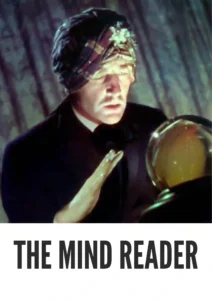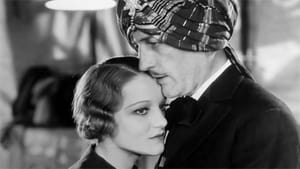Video Sources 0 Views
- The Mind Reader 1933 Colorized


Synopsis
Table of Contents
ToggleHollywood Hustle and Psychic Scams: The Mind Reader (1933) in Dazzling Color

Step into the shadowy world of The Mind Reader, a captivating occult mystery drama from 1933, now brilliantly colorized for a stunning viewing experience. Starring Warren William, this film delves into the art of deception, manipulation, and the allure of the psychic world. Perfect for fans of pre-code cinema and those fascinated by psychological thrillers, this HD download offers a fresh perspective on a classic tale of ambition and illusion.
The Mind Reader Storyline: A Web of Deceit and Illusion
The Mind Reader tells the story of stage magician, and con artist, Ormond Carey (Warren William), a charlatan who uses his “mind-reading” abilities to swindle unsuspecting people. With the help of his assistants, he sets up a fake spiritualist racket, preying on the grief and desperation of those seeking contact with the afterlife.As Carey’s scheme grows more elaborate, he encounters stage performer, Jean Allen (Constance Cummings), a beautiful and skeptical woman who sees through his facade. Despite her reservations, she becomes entangled in his world of deceit, leading to a complex relationship filled with suspicion and attraction. As Carey’s cons become riskier, he must confront the consequences of his actions, blurring the lines between illusion and reality. Ultimately, The Mind Reader is a suspenseful exploration of human nature, ambition, and the power of belief.
Movie Cast
The film boasts a talented cast of actors who bring this intriguing story to life:
- Warren William as Ormond Carey
- Constance Cummings as Jean Allen
- Allen Jenkins as Chick
- Natalie Moorhead as Christine
- Clarence Muse as Sam
Movie Genre
The Mind Reader falls into the genre of occult mystery drama, exploring themes of deception, psychological manipulation, and the dark side of human nature. Its intricate plot and morally ambiguous characters make it a compelling and thought-provoking film.
Historical Context: Pre-Code Hollywood and Psychic Phenomena
Released in 1933, The Mind Reader reflects the pre-code era of Hollywood, characterized by its bold and often risqué exploration of social issues and human behavior. The film taps into the public’s fascination with spiritualism and psychic phenomena, which were prevalent during the early 20th century. The Mind Reader offers a glimpse into the cultural anxieties and moral ambiguities of the time.
Colorization Details
This colorized version of The Mind Reader has been meticulously restored using modern digital techniques, enhancing the visual appeal while preserving the film’s original atmosphere of mystery and intrigue. The colorization process involved carefully analyzing the grayscale tones of the original black and white footage and assigning appropriate colors to each scene. While the specific software used remains proprietary, the techniques employed included advanced algorithms for color palette selection and image enhancement. This painstaking process brings new life to the characters and settings, making the story even more engaging for modern audiences.
Technical Details
- Directed by: Roy Del Ruth
- Written by: Robert Lord
- Cinematography: James Van Trees
- Edited by: James Gibbon
- Production Company: First National Pictures
- Distributed by: Warner Bros. Pictures
- Runtime: 76 minutes
Technical Specifications
- Download Format: MP4
- Resolution: HD (1080p)
- Compatibility: Compatible with most devices, including smartphones, tablets, computers, and smart TVs.
Reviews and Critical Reception
The Mind Reader (1933) is a compelling pre-code drama that showcases Warren William’s talent for portraying complex and morally ambiguous characters. While it may not be as widely known as some of the other films of the era, it remains a fascinating and entertaining example of early Hollywood cinema and a valuable piece for classic film enthusiasts.
FAQs
- Q: What is The Mind Reader about?
- A: The Mind Reader is a pre-code drama about a con man who uses his “mind-reading” abilities to swindle unsuspecting people.
- Q: Who are the main actors in The Mind Reader?
- A: The film stars Warren William and Constance Cummings in leading roles.
- Q: Is this version of The Mind Reader colorized?
- A: Yes, this version has been professionally colorized to enhance the viewing experience.
- Q: What makes The Mind Reader interesting for classic film fans?
- A: The Mind Reader offers a glimpse into the pre-code era of Hollywood, characterized by its bold and often risqué exploration of social issues and human behavior.
- Q: What is the download format?
- A: The download format is MP4, which is compatible with most devices.
- Q: What resolution is the download?
- A: The resolution is HD (1080p), providing a high-quality viewing experience.
Download Now in HD!
Watch The Mind Reader Today!











